| |
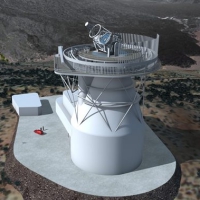 Informatic instrumentation for post-processing of numerical data obtained using supercomputing techniques Informatic instrumentation for post-processing of numerical data obtained using supercomputing techniques
Present-day research in Solar Physics (line 1 of the Severo Ochoa project) requires multi-dimensional numerical modelling of complex physical phenomena. In the IAC we perform numerical simulations for problems in magnetohydrodynamics and radiative transport as well as the inversion of spectropolarimetric data and the development of numerical tools for the European Solar Telescope (EST). We carry out these calculations using supercomputers at high level within Europe, but the posterior processing of the data must be carried out at the IAC. The volume of data to process in order to stay at the forefront of world research is huge, needs major storage capacity with ultra-fast access, and RAM, and this cannot be done on standard work stations. The Severo Ochoa programme finances a high peformance machine for post-processing (analysis and visualization ) of the data, with the aim of keeping the IAC competitive at a world level in this line of research.
|
|
| |
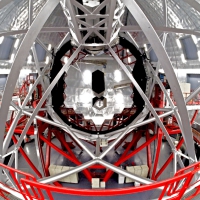 EMIR medium band filters / The first galaxies with GTC EMIR medium band filters / The first galaxies with GTC
When did the dark ages end? When did baryons start producing stars? When did the first star appear in the Universe? How did the first galaxies look like? Did the first stars leave the seeds of supermassive black holes behind? Which are the properties of these seed SMBHs? Which is the highest redshift galaxy? What should we call a galaxy at these first moments in the era of stars? When did the first metals that form our bodies appear? The proponents of this project will address all these relevant questions in the immediate future through a dedicated GTC long-term survey with EMIR in the NIR using a large number of medium band filters. The Severo Ochoa programme finances the near infrared media bands filters used in the Project.
|
|
| |
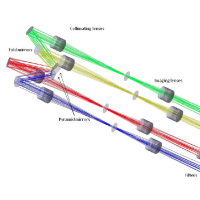 AOLI – Observing at the diffraction limit AOLI – Observing at the diffraction limit
AOLI (Adaptive Optics Lucky Imager) is a new generation instrument to reach the diffraction limit in the visible range on medium to large telescopes. This instrument is a collaboration led by the IAC, together with UPCT, ULL, IoA and the Colonia University. TP3 sensor which works with much fainter objects than those traditionally accessible, and the software for control and closing the loop have generated an instrument which is unique in the world. AOLI has been designed for the WHT with spectacular results. This, together with its modular, versatile design, will lead us to the next step: adaptation to the GTC and other telescopes. The Severo Ochoa programme will fund the project, with the aim of finishing AOLI@WHT, and turning it into a common user instrument, as well as bringing to fruition AOLI@GTC which will offer the IAC an instrument with a potential in resolution and depth not available on any other telescope in the world.
|
|
| |
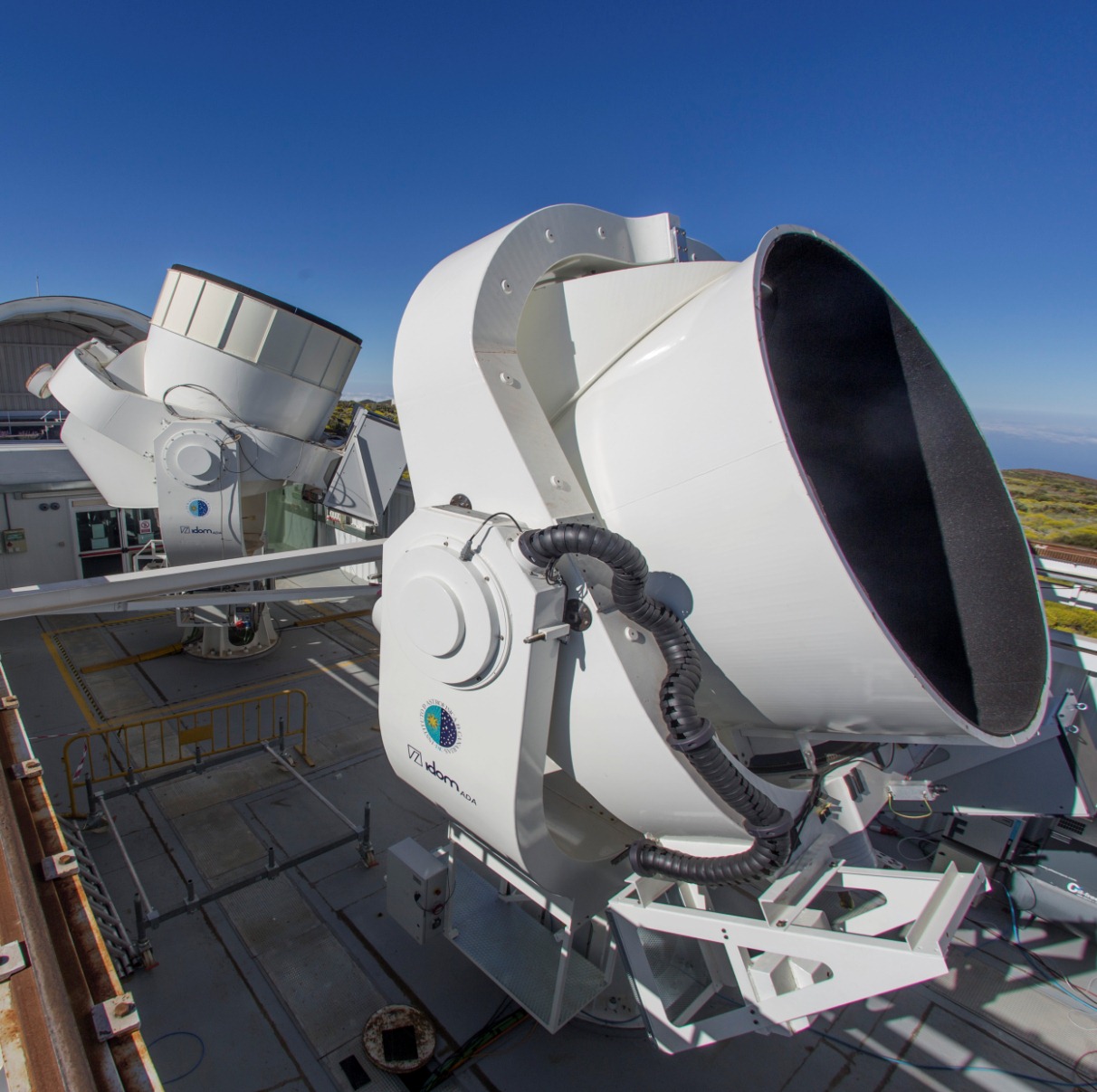 A microwave spectrometer for the characterization of the CMB spectral distortions A microwave spectrometer for the characterization of the CMB spectral distortions
The Cosmic Microwave Background (CMB) provides one of the most powerful tools in modern cosmology. In particular, CMB polarization offers a new window to the inflationary phase of the Universe, some 10-35 s after the Big Bang. Experiments like QUIJOTE (Q-U-I JOint TEnerife) are looking for the signature of primordial gravitational waves in the CMB polarization maps. However, beyond the CMB polarization, there is also a wealth of information, almost unexplored, encoded in small deviations of the CMB energy spectrum from the pure blackbody shape, providing new ways to probe the thermal history of our Universe, the inflationary era and the nature of the dark matter. We plan to extend the goals of QUIJOTE by constructing a new and unique microwave spectrometer in the frequency range 10-20GHz, with the aim of characterizing the spectral signals associated to the reionization epoch and dark ages in the Universe. The Severo Ochoa programme funds the recruitment of personnel for this project.
|
|
| |
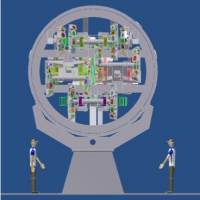 Infrastructure for cryogenic tests for the development of HARMONI Infrastructure for cryogenic tests for the development of HARMONI
HARMONI is an optical/IR integral field spectrograph, chosen as a first light instrument on the E-ELT. The IAC is designing the pre-optics and the electronics of the instrument. In the present phase of development (phase B, 10/2015-10/2017) the IAC has to carry out a large number of tests of components and sub-systems, many of these cryogenic. The Severo Ochoa programme will fund the infrastructure which the IAC needs to cover the commitments acquired for HARMONI, and to carry out the required cryogenic tests. These infrastructures will be useful for all projects at the IAC which need cryogenics, and will thus put the IAC in a position as centre of reference in the development of cryogenic systems. The participation in HARMONI is a unique scientific opportunity for IAC researchers.
|
|
| |
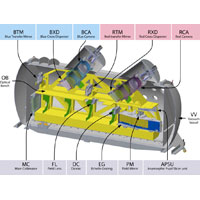 ARES: High Spatial Resolution ARES: High Spatial Resolution
The coordinated project ARES (High Spectral Resolution for its Spanish title) has the aim of unifying and consolidating the development of instrumentation with high spectral resolution, in order to drive forward the pioneering scientific programme which the IAC is developing in the field of the search for, and the characterization of Earth-like exoplanets, in the evolution of stellar populations in our galaxy and in the field of cosmology and fundamental physics using ultrastable high resolution spectroscopy. ARES incorporates specific high impact actions in the design and development of next generation instrumentation for telescopic installations in the European Southern Observatory (ESO) and at the Roque de los Muchachos Observatory: HIRES@E-ELT, HORS@GTC, NIRPS at 3.6m-ESO, HARPS3@INT and ESPRESSO@VLT. The ARES project will allow the IAC to provide technical contributions and to be involved in the guaranteed scientific exploitation in : (a) HIRES, via participation in phase A of the design of the visible arm of this spectrograph (2016-2019); (b) HORS : by carrying through improvements in it optical components (prisms), and commissioning it on the GTC (2016-2017); (c) NIRPS: design and development of its fiber bundle (2016-2019), (d) HARPS3: carry out the design and construction of the thermal isolation chambers of the spectrograph (2016-2018) and (e) ESPRESSO: carry out the integration phase of the instrument (2016-2017). Specifically ESPRESSO will allow the detection and characterization of Earth-like planets in the habitable zones around nearby stars in the range GKM, while HARPS3 will concentrate on systems of stars with planets analogous to the Sun-Earth system. NIRPS will be particularly efficient at the detection of low mass planets in orbit around cooler stars of type M, while HORS, will characterize the chemistry of the most primitive stars in the Milky Way. HIRES will study, among other scientific cases, the atmospheres of exoplanets from Neptunes to Earths, including those in the habitable zone, with the objective of detecting signs of life on rocky planets. The Severo Ochoa funds the hiring of personnel for this project.
|
|
| |
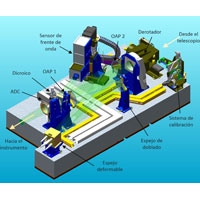 Support for the development of Laser Guide Stars (LGS) for GTCAO Support for the development of Laser Guide Stars (LGS) for GTCAO
This technological project is being developed in the framework of the development of Laser Guide Stars (LGS) for the Adaptive Optics of the GTC (GTCAO). The LGS is a part of one of the technological projects formally supported by the Severo Ochoa, and is transversal to several lines of research. The LGS consists of several opto-mechanical subsystems, which require, in parallel with their design, precise numerical modelling of their structural and thermal behaviour. The Severo Ochoa programme finances the activities of R+D in the monitoring of the wavefront of the laser guide star during its uplink.
|
|
| |
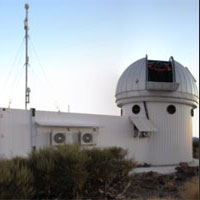 Round-clock observations with SONG spectrograph Round-clock observations with SONG spectrograph
The first node of SONG (Stellar Observations Network Group) become into operation on October 2014 at Observatorio del Teide and since then continuo us of high precision radial velocity of bright stars have been consistently obtained with and unprecedented precision (below 1.5 m/s per point for mv~4 stars) as well of high resolution (R ~ 110.000) stellar spectra. A test-run feeding solar light into the stellar spectrograph provided unforeseen results concerning the sensitivity to detect the signal of the solar 5-min oscillation will higher quality than the obtained with other well referenced helioseismic instruments, therefore proving the feasibility to use during day time the SONG spectrograph (unused otherwise) for solar physic research. The Severo Ochoa programme finances the acquisition of the adequate instrumentation to be able to perform systematic, robust and continuous complementary solar observations with SONG spectrograph.
|
|
| |
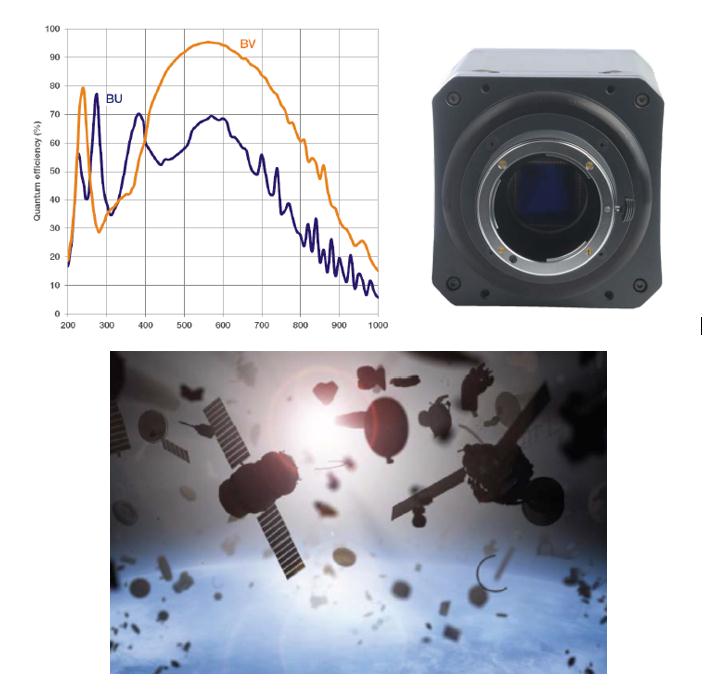 Evaluation of BI-CMOS technology and application to search for NEAs Evaluation of BI-CMOS technology and application to search for NEAs
In recent years, CMOS sensor technology has progressively imposed itself on the classic CCDs in the visible range. The new cameras equipped with an improved type of these sensors (BI-CMOS) also add an excellent spectral response. This makes them ideal for applications such as the search for objects of the NEA type (near-Earth asteroids), observation programs common in small OT telescopes. Therefore, the use of this type of cameras will mean a significant improvement in their performance. Within the infrastructure of the IAC known as LISA (Image and Sensors Laboratory for Astronomy), the characterization of detectors and cameras is carried out as a strategic line of the Instrumentation Area, having already identified the interest in this new type of sensors for applications such as the above. Thus, the combination of two of these cameras in two similar 46cm telescopes and a large field currently in operation at the OT, will allow us to make an ideal comparison both at laboratory level (LISA) and at telescope level (direct observation of NEAs).
|
|












